Understand FET research
Scientific ideas
-
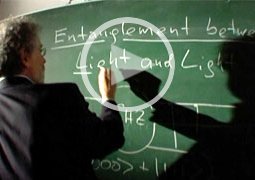 Quantum Information Processing and Communication
Quantum Information Processing and Communication -
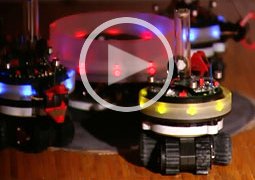 Complex Systems
Complex Systems -
 Bio-inspired ICT
Bio-inspired ICT 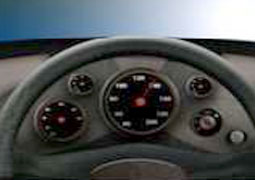 No more moods: technology to cheer you up
No more moods: technology to cheer you up An extremely bio-inspired artefact
An extremely bio-inspired artefact Jewel in the crown for quantum computing
Jewel in the crown for quantum computing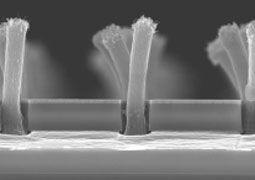 Carbon nanotubes: a matter of mats
Carbon nanotubes: a matter of mats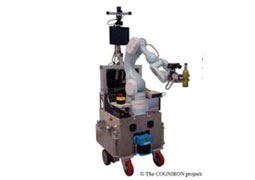 Can't make your kids tidy up their room? Try a robot and boost you parental ego
Can't make your kids tidy up their room? Try a robot and boost you parental ego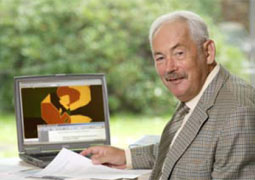 Three distinguished FET scientists receive Nobel Prize awards
Three distinguished FET scientists receive Nobel Prize awards
No more moods: technology to cheer you up
 Computing intelligence is being woven into the fabric of everyday life. As everything gets smart, we will begin to discover that technology may work to actively brighten our mood and reduce our mental stress.
Computing intelligence is being woven into the fabric of everyday life. As everything gets smart, we will begin to discover that technology may work to actively brighten our mood and reduce our mental stress.
Imagine coming home from work in a rotten mood. But as you walk through the door your hi-fi instantly begins to play. But being smart, it analyses how you react. If you appear to relax, maybe nod along or hum, it automatically turns up the volume. If you show signs of boredom or stress, it switches tracks. It may even dim or brighten the lights or change their colour ― light has a big influence on our mood.
The sensing element of this so-called adaptive technology makes use of numerous psychophysiological characteristics ― physical responses of the body which indicate what is going on in a person’s head. These characteristics include their facial expression, skin conductance, general muscle tension, heart rate and heart rate variability. Sensors will also take measurements of the physical environment (e.g. ambient temperature) and the movement of the occupant being assessed (the subject).
An extremely bio-inspired artefact
 During the LAMPETRA Project, thanks to the joint effort of roboticists, neurobiologists and computer scientists, an extremely bio-inspired artefact, based on animal models performing undulatory (eel-like) swimming, has been developed: it is composed by a high number of segments, a compliant body structure, muscle-like actuators, artificial stretch receptors, binocular vision system, low and high level control (mimicking the neuronal level, the biomechanical structure and the control functions of real lampreys/salamanders).
During the LAMPETRA Project, thanks to the joint effort of roboticists, neurobiologists and computer scientists, an extremely bio-inspired artefact, based on animal models performing undulatory (eel-like) swimming, has been developed: it is composed by a high number of segments, a compliant body structure, muscle-like actuators, artificial stretch receptors, binocular vision system, low and high level control (mimicking the neuronal level, the biomechanical structure and the control functions of real lampreys/salamanders).
Onboard components enable central pattern generation for replicating natural body movements and allow the use of sensor inputs for visuo-motor coordination and posture control.
Jewel in the crown for quantum computing
 The FET programme is investing heavily in projects that are pushing towards the next big ICT revolution: quantum computing. In a major breakthrough, a European-funded collaboration has successfully grown a pure crystal of diamond which, operating at room temperature, possesses all the properties required to control and read data in a quantum machine.
The FET programme is investing heavily in projects that are pushing towards the next big ICT revolution: quantum computing. In a major breakthrough, a European-funded collaboration has successfully grown a pure crystal of diamond which, operating at room temperature, possesses all the properties required to control and read data in a quantum machine.
Diamond-based quantum computers use electrons to store data bits, and photons (individual packets of light) to read and control the data bits. Diamond has been identified as a promising candidate for solid-state quantum computing; unlike other approaches which generally require complex and expensive cooling systems, diamond can operate at room temperature.
Carbon nanotubes: a matter of mats
 As our demand for miniaturised electronics continues unabated, scientists are on the lookout for new materials which will let them shrink microchips down to the nano-scale. Tiny tubes of carbon are attracting a lot of attention, but more research is needed to improve their performance and find more economical methods for their mass production.
As our demand for miniaturised electronics continues unabated, scientists are on the lookout for new materials which will let them shrink microchips down to the nano-scale. Tiny tubes of carbon are attracting a lot of attention, but more research is needed to improve their performance and find more economical methods for their mass production.
Carbon nanotubes are basically made up of flat sheets of carbon atoms rolled up into cylinders that can measure as little as just a couple of nanometres in diameter.
As carbon molecules, the nanotubes have unique electrical properties and scientists are getting increasingly excited about their potential to replace today’s copper interconnects in microchips, helping to shrink the size of components yet further. Carbon nanotubes can carry a much higher density of current and have better thermal conductivity than copper wires.
Can't make your kids tidy up their room? Try a robot and boost you parental ego
 Can robots learn lessons from humans and adapt their behaviour accordingly? This is what the scientists working for the COGNIRON (Cognitive Robot Companion) project wanted to achieve with their studies on the perceptual, reasoning and learning capabilities of robots. But how did they do this?
Can robots learn lessons from humans and adapt their behaviour accordingly? This is what the scientists working for the COGNIRON (Cognitive Robot Companion) project wanted to achieve with their studies on the perceptual, reasoning and learning capabilities of robots. But how did they do this?
One of the major technical challenges was to provide a reference "Cognitive Architecture" for autonomous robots that interact with humans and provide services to them. To address this problem, the researchers defined a large number of competences that such robots might need, and then combined collections of these functions in a set of "three key experiments".
Three distinguished FET scientists receive Nobel Prize awards
 Nobel Prize in Physics 2007 awarded to Albert Fert and Peter Grünberg
Nobel Prize in Physics 2007 awarded to Albert Fert and Peter Grünberg
Albert Fert (Centre National de Recherche Scientifique, Université Paris-Sud, Orsay, France) and,
Peter Grünberg (Forschungszentrum Jülich, Germany) were awarded the 2007 Nobel Prize in Physics, for their work on the Giant-Magneto-Resistance effect (GMR)
Nobel Prize in Physics 2005 awarded to Theodor Hänsch
The Nobel Prize in Physics 2005 was awarded for outstanding achievement in the field of quantum optics, the science describing the nature of light and its interactions with matter particles according to the principles of quantum mechanics. One of the three winners was Professor Theodor Hänsch from Max-Planck-Institut für Quantenoptik, Garching and Ludwig-Maximilians-Universität, Munich, Germany. Professor Hänsch received the Nobel Prize for “his development of laser-based precision spectroscopy, that is, the determination of the colour of the light of atoms and molecules with extreme precision.” His research placed Europe in the lead in this field.
Press Contact
For any further enquiries and interview arrangements, please contact secretariat@fet11.eu
Journalists have free entrance to the conference.



 Media Centre
Media Centre 





